A street-legal Dakar-bike made in China at an affordable price with three finishers from three starters in the Dakar Rally. Here's our test on the Kove 450 Rally.
The Kove 450 Rally puts its finger right on this sore spot. Especially at the price of $US8,999 for the basic version that looks like a twin to Marc Coma’s 2015 KTM Rally Replica. Suddenly, the idea of racing “African-style” on your local dirt tracks may become real as the price tag is no longer out of reach for a rally replica bike.
“Will it be reliable? Has it been tested enough? How will it perform?” All legitimate questions about a Chinese motorcycle. An answer can be given after a glance at the final standings of the last Dakar Rally. Kove brought three rookie riders to the finish, Sunier Sunier in 27th position, Deng Liansong in 44th and Fang Mingji in 54th.
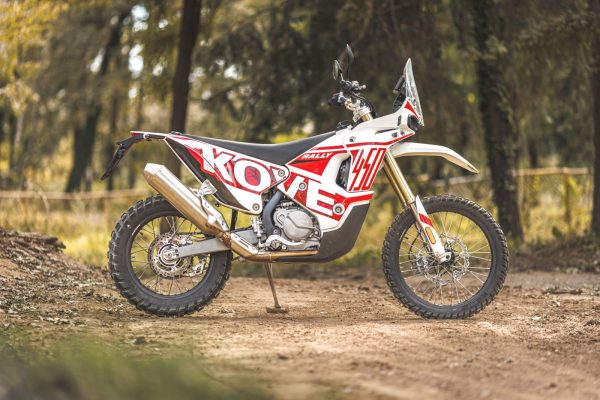
SO WHAT IS THE KOVE COMPANY?
Kove is part of “Tibet New Summit Motor Co. Ltd.” a large-scale Chinese motorcycle manufacturer involved in research, development, production and sales of motorcycles, scooters, ATVs and electric bicycles. The company was founded in Tibet in 1994 with the title of “First Motorcycle in China,” the headquarters are in Chongqing, one of the world’s largest cities in the southwestern part of China.
At some point Zhang Xue, CEO of Kove, became intertwined with Tibet New Summit. Zhang dreamed of becoming a motorcycle racer, so he began work as a mechanic and in 2007 participated in the Chinese Motocross Championship with modest success. His modified bikes caused a stir, so he decided to further his technical knowledge by joining a motorcycle manufacturing company. Four years later he quit with a lot of engineering knowhow, and founded the company with a staff of 10 people. In 2017 he started the Kove factory, today there are more than 600 employees and the company produces frames, engines, exhausts, and fuel tanks in-house.
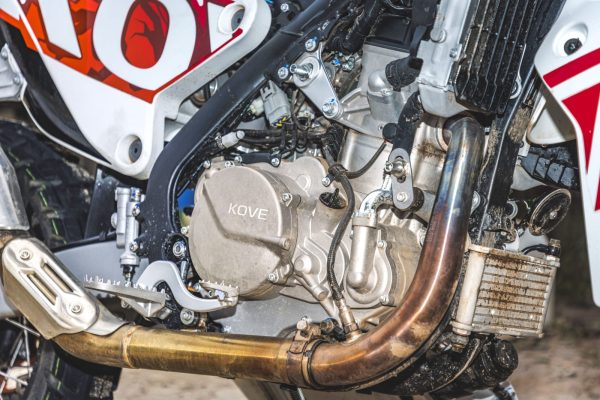
Xue assures that all his employees are motorcycle enthusiasts and therefore know what is really needed without getting lost in unnecessary discussions between departments. A slightly bold statement for a country that does not look back on a motorcycle history like America or Europe. Let’s assume with superhuman effort, Xue still manages to direct the processes in his company and to take the important decisions, plus his guys will be very motivated to make Kove a success and to take China to the top. If the company continues to grow as he believes, he will have to trust other people one day, as we have learned from many small motorcycle companies that had to make the big step (especially in Italy).
At first glance, the bike looks like a copy of the KTM Rally bikes of the mid-20s but the bodywork is deceiving. While KTM raced in the Dakar throughout the 20s with a trellis frame, the Kove sports a traditional oval steel tube frame that looks more like the latest KTM Enduros.
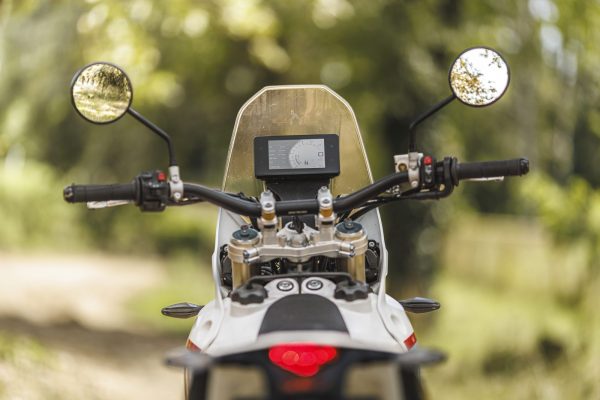
The white body parts are of good quality without burrs or cavities and continuing with the visual inspection on the mechanical parts I noticed nuts and bolts of western standard as well as robust components.
The bike made available to us by the Italian importer Pelpi, is the basic version. The suspension travel has been reduced to 255/250mm instead of 305/300mm for a seat height of 910mm. The engine derives from the Zongshen powerplant that is similar to that of the Fantic Caballero 500, but with a different cylinder and twin cam head. It delivers 51hp @ 9,500 rpm instead of the Rally Pro’s 54 hp.
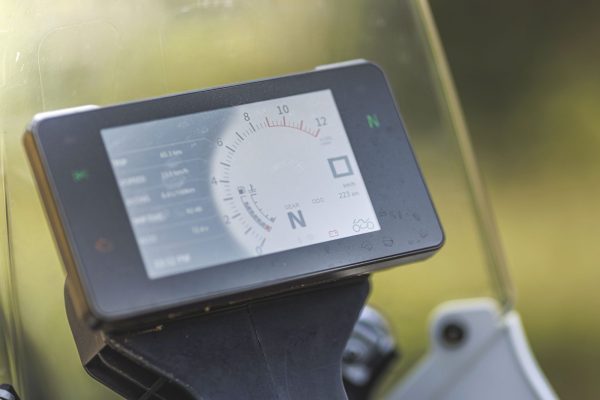
Preload, compression and rebound are adjustable on the 49mm USD fork and on the rear monoshock with progressive linkages to the single-piece cast aluminium swingarm. The frame is made of oval steel tubing following a diamond shape and with a closed lower cradle. On the tail is a load-bearing 15L tank made of plastic material without reinforcing tubes. The seat is very narrow and allows for effortless movement on top of the bike, thanks also to the general layout and narrow central part of the bike.
I disassembled the seat (just pull a cable that comes out above the swingarm pivot on the left side of the bike) and the two front tanks of about 7L each to discover various cables and hoses well in order. The tank mounts are adjustable and well made, all that is needed for disassembly is a 6mm Allen key, but it must be very long! The front fairing is held on with six quick fasteners and comes off in no time but on the test bike the blinker wires had to be disconnected. Everything is fine concerning the quality of design, the execution of parts and accessibility for maintenance.
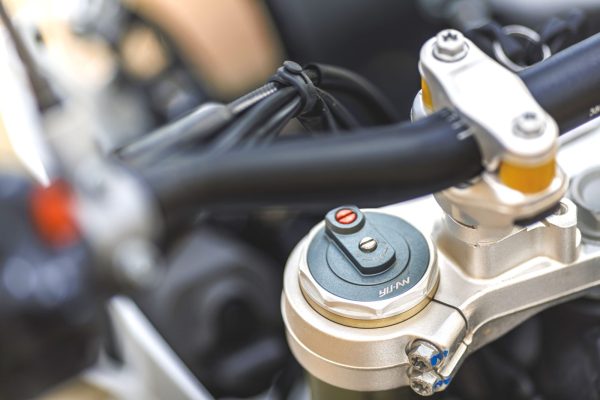
Under the engine is a 2mm (a bit thin) carbon fibre skidplate that carries a small tool compartment on the right side while there is no water tank as required by Rally-Raid regulations. At the front, plastic grids protect the two different sized radiators (with two fans, also different sizes) and the small oil cooler located at the bottom. The electric switch units on the 28/22 mm handlebar (attached via a system similar to the KTM PHDS) have been seen before on other European motorcycles. Levers and grips are functional, but hand guards are missing in action.
The support that holds the TFT display is made of plastic and there is no possibility to add a roadbook or navigator. This piece is the only component that seems a little weak compared to the other parts of the bike.
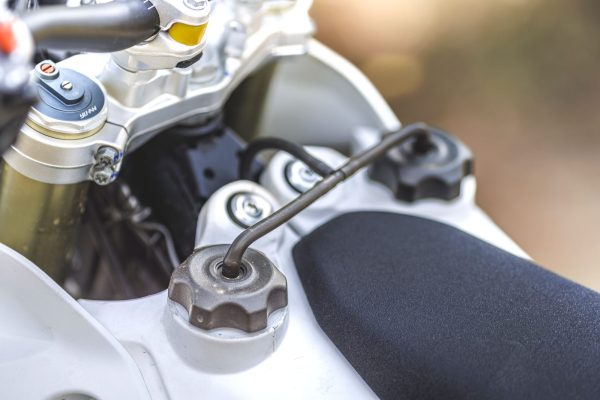
The 5-inch TFT displays a graphical tachometer, speed, engaged gear, ABS indicator, fuel, engine oil temperature, tripmeter, fuel consumption and a watch. Removing the ABS completely requires many actuations of two keys on the left switch unit, one button would be desirable to make it easier. The ergonomics are correct for an off-road bike for both standing and seated riding, and the feet find solid support on the wide, cast steel foot pegs.
We have to keep in mind that we are not testing a replica of the official Dakar bike but the homologated European Euro 5 version that will be available in fall of this year. Starting the engine reveals a mechanical noise which is not excessive, but a bit “rougher” than established powerplants and with a slightly irregular idle speed. The clutch works easily but the search for neutral is sometimes challenging.
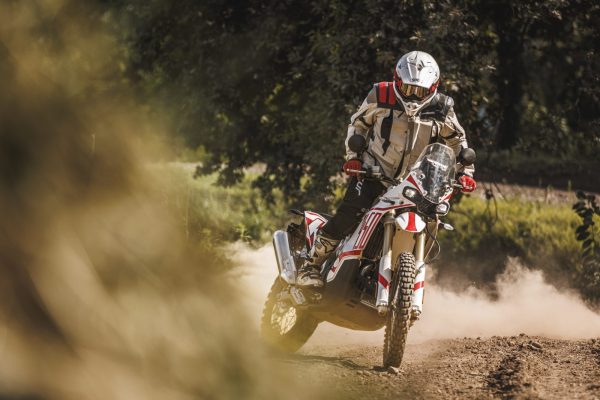
The Kove engineers have done a good job on the intake and exhaust systems as the noise emissions are pleasant and the engine performance is decent for a 450 cc single-cylinder, but I wouldn’t call it “racing.” It works fine for a light adventure bike and is enough to put the bike sideways on dirt tracks. The torque at low revs is discrete, mechanical noise increases under acceleration while vibrations remain below the threshold of annoyance. At low rpm with partial throttle opening or during on/off the engine response is sometimes a little harsh.
The same applies to the brakes that leave room for better feeling and progressiveness.
On gravel roads and on a tiny enduro track, the Kove handled like a lightweight enduro bike, the stated dry weight is 145kg. Although the upper fork plate is prepared for the installation of an Öhlins-type steering damper, the bike showed reassuring stability in standard configuration. While the suspension reacts well to the roughness of dirt tracks, it soon reaches the limit on a motocross track because progressivity and hydraulics are not really designed for this type of use, nor are the homologated Chinese CST enduro tires with a road profile.
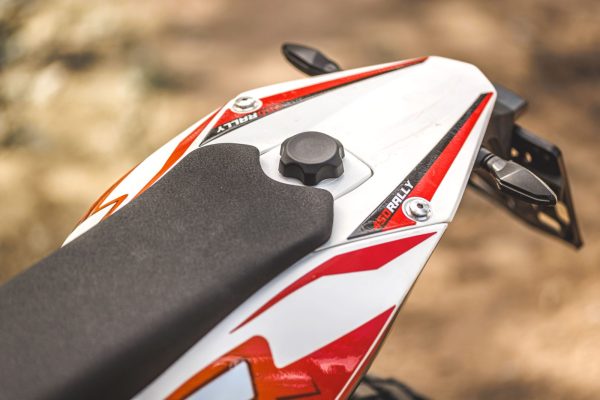
On the road, the Kove rides quite well and safely thanks to sufficient wind protection and the absence of vibration, but I wouldn’t strain myself on long highway rides at speeds over 120 km/h. The basic version of the Kove 450 is intended to be an “easy” Dual Sport bike and is a viable and much cheaper alternative to twin-cylinder ADV motorcycles for people who ride more offroad than on. The Chinese bike positions itself right in the middle between Honda CRF 300-type bikes and the big 700cc single-cylinder bikes of the KTM group, but without reaching their level of versatility. The Kove 450 performs well offroad, but comfort on road suffers a bit so long road transfers to reach the start of a dual sport ride require some patience.
Those who would like to race the bike should consider replacing the instrument support with a sturdy rally tower, re-tuning the suspension, changing tyres, adding handguards and a more rugged skidplate.
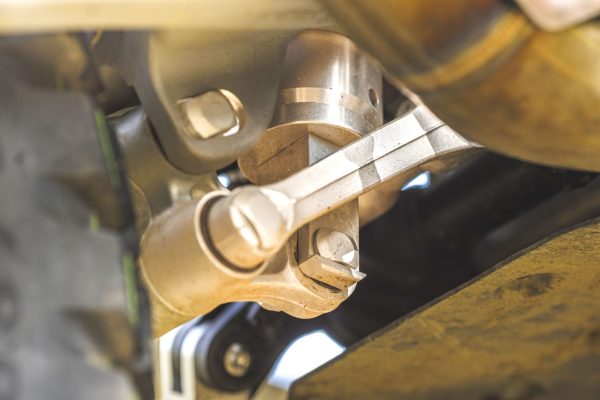
When Zhang talks about the five-year plan for the Rally Raid program and the target to finish the first race (already done with 3 bikes), to place in the top 20 in the second (2024), to place a bike in the top 10 in the third event, to be on the podium in the fourth, and to win in the fifth (2027), we have to take him seriously. The Kove 450 Rally is a well-executed bike at first shot. Established companies such as KTM or Honda took seven years before winning the Dakar.
Considering the truly unique and unprecedented commitment and passion of this Chinese company, one could bet they would succeed because they learn very fast. Perhaps faster than we do in the Western Hemisphere.
For the full feature, check out issue #532.
WORDS KLAUS NENNEWITZ || PHOTOS MASSIMO DI TRAPANI
